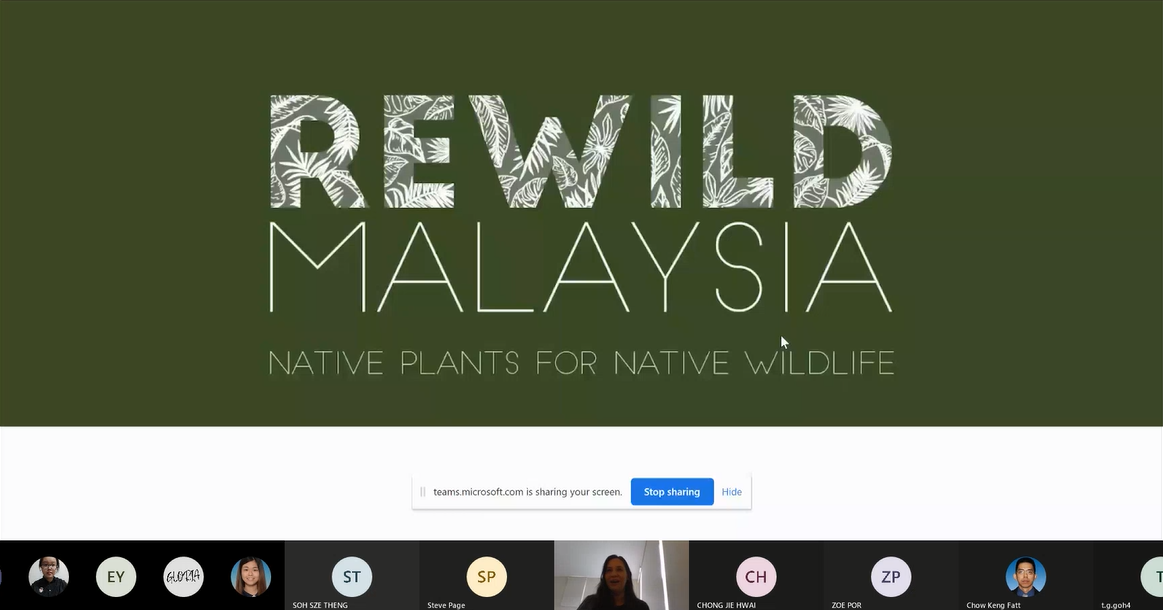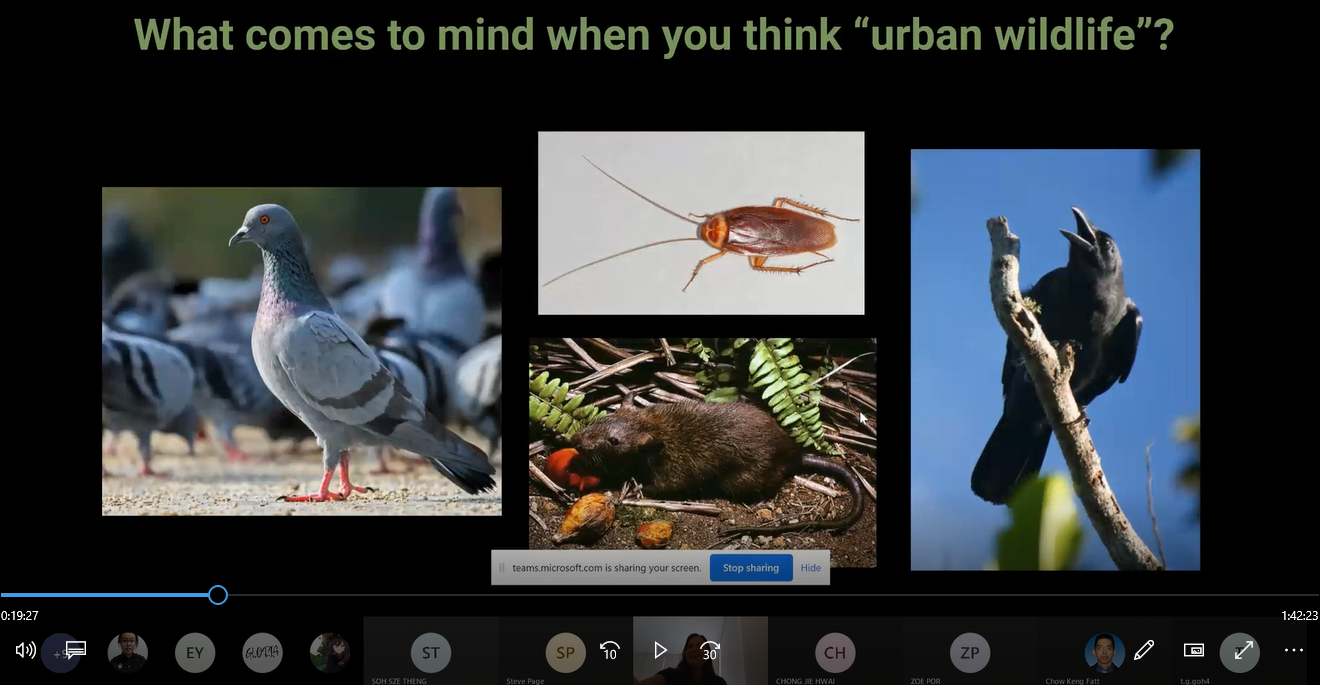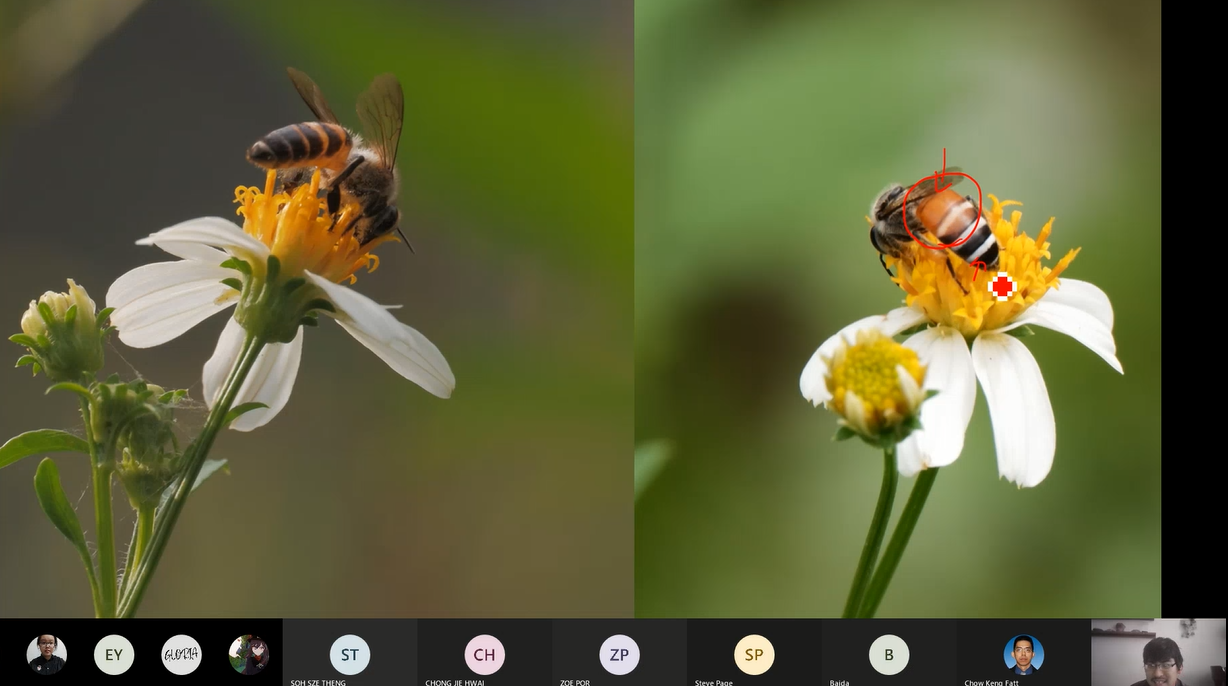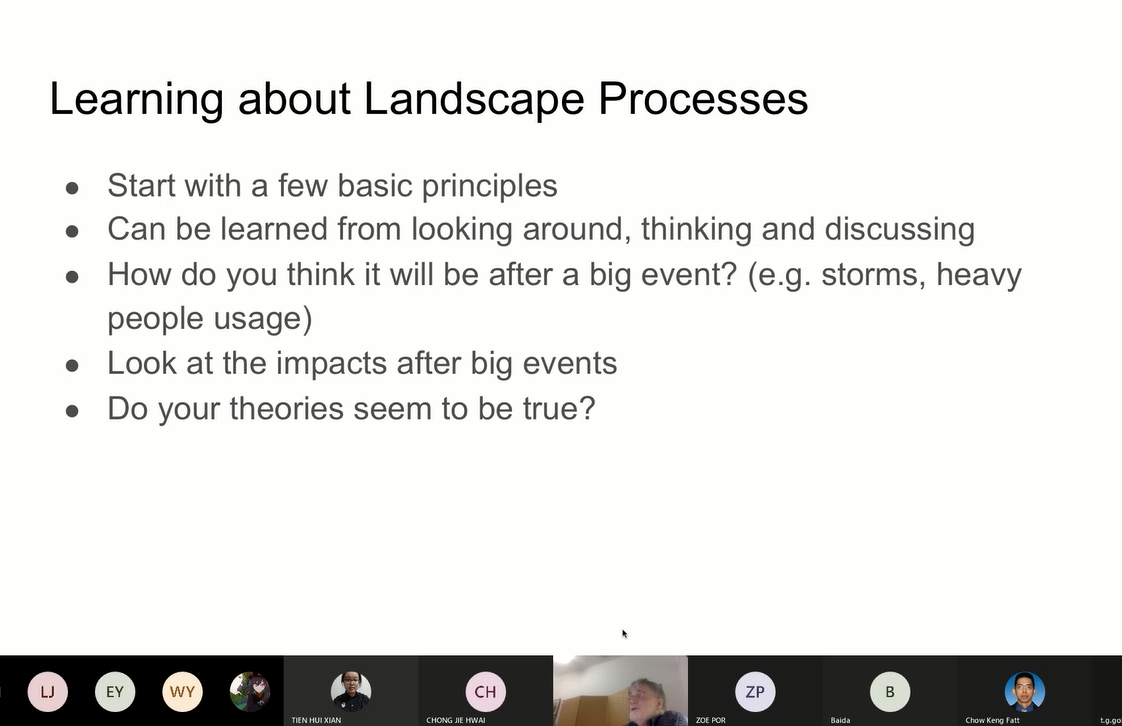

The webinar on progress
Some of us perceive cities as concrete jungles due to the widespread developments with high rise buildings, highway constructions as well as other infrastructures that have been increased over the decades. This led to the assumption that there were less or no wildlife existed in the cities. Whether we realise it or not, there is urban nature living among us that goes unnoticed. Considering their existence and significance to all, it is imperative to get to know more and understand their ecological importance.
In view of this matter, the Department of Student Affairs of Sungai Long Campus organised a webinar titled Environmental Awareness Webinar – Wildlife in Cities: Why It Matters? on 15 March 2022 via Microsoft Teams to provide the audience with an opportunity to learn about native plants, animals and insects that adapt well in urban settings. The webinar was presented by Executive Director and Founder of Free Tree Society Baida Hercus and Managing Director of Urban Biodiversity Initiative Thary Gazi Goh.

Baida urging audience to think about urban wildlife
During the webinar, Baida invited the audience to reimagine cities through the rewilding lens. She explained, "Rewilding is a progressive approach to conservation. It's about letting nature take care of itself, enabling natural processes to shape land and sea, repair damaged ecosystems and restore degraded landscapes. Through rewilding, wildlife's natural rhythms create wilder, more biodiverse habitats." She also mentioned that humans are currently living in an interconnected complex system with other living creatures. She urged to bring the wildlife back to nature and restore them.
According to her, the rewilding approach is a paradigm shift in the coexistence of humans and nature. She said, "Urban wildlife in cities requires different approaches with rewilding as one of the strategies. This is due to the fact that a total of 1,742 species in Malaysia are threatened with extinction risk and this requires human intervention. Free Tree Society is currently running a Wildlife Malaysia programme where the public is given two plants per person as a way to encourage and promote the planting of native plants in our country. Rewilding can be done at any empty and vacant spaces such as rooftops, balconies, even inside buildings."

Baida explaining that native plants are essential for insects and pollinators to thrive
Baida mentioned that native plant is essential for insects and pollinators as nectars and berries are provided by native plants. She advised not to use chemical fertilisers and pesticides/herbicides. This will encourage native wildlife to strive and survive while supporting the coexistence of humans and other living organisms.
"To rewild our cities, identifying species is pivotal as it affects the survival of other living organisms. This is because we are all interconnected at the same level," she said. She recommended using the Malaysia Biodiversity Information System (MyBIS) as a platform to identify wildlife species.
Thary Gazi shared that wildlife, especially plants, can adapt well in urban and suburban settings. "They can be found not just in gardens but other places such as buildings and cracks that are hardly visible to the naked eyes," he said. According to Thary, plants grow by themselves without any human intervention. This enhances the chance for various wildlife to grow in cities. Species like fig trees, banyan trees, shrews, black-naped Orioles, starlings and munias are some of the wildlife species that are commonly seen in the cities.

Thary Gazi explaining the advantageous characteristic of plants that are able to grow in buildings and in between cracks
Thary Gazi also took the opportunity to introduce some common species such as the Asian koel (a brood parasite) to the audience and taught them how to differentiate the species. "Different species feed on different plants. That creates a food chain and a balanced ecosystem. A balanced ecosystem also includes pollination that is crucial in creating food resources." Thary Gazi also mentioned that knowing and understanding different species can help one to develop the attitude called biophilia (love for life or living thing).
The webinar also saw Steve Page, a member of the Malaysian Nature Society Special Interest Group Flora introducing the concept Landscape Approach to help the audience manage the environment. Steve explained that one has to start with a few basic principles, by looking around, thinking and discussing. He said, "What is interesting about the landscape approach is that we learn about the river basin and water catchment." According to Steve, the Klang Valley River Basin is one of the examples with branches of rivers and several water catchments. It was used to conduct a study on plastic pollution and its impact in 2018.

Steve Page explaining the landscape processes
© 2022 UNIVERSITI TUNKU ABDUL RAHMAN DU012(A).
Wholly owned by UTAR Education Foundation (200201010564(578227-M)) LEGAL STATEMENT TERM OF USAGE PRIVACY NOTICE